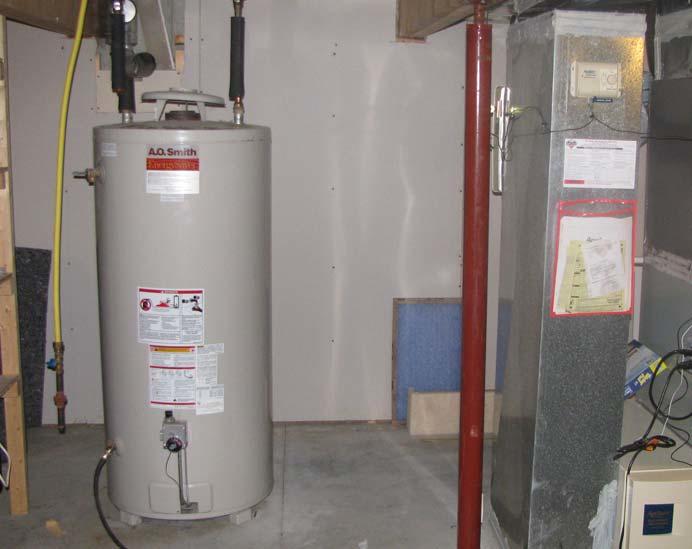Top Methods to Maintain Your Home's Hot Water System Effectively
Top Methods to Maintain Your Home's Hot Water System Effectively
Blog Article
Just how do you actually feel on the subject of What Kind of Maintenance Do Water Heaters Need??

Warm water is necessary for daily comfort, whether it's for a revitalizing shower or cleaning meals. To ensure your warm water system runs effectively and lasts much longer, regular upkeep is key. This short article gives useful pointers and insights on exactly how to maintain your home's warm water system to avoid interruptions and pricey repairs.
Intro
Keeping your home's hot water system might appear challenging, however with a couple of easy steps, you can ensure it operates smoothly for years to come. This guide covers every little thing from recognizing your hot water system to DIY maintenance suggestions and understanding when to call professional help.
Value of Keeping Your Warm Water System
Regular maintenance not only prolongs the life-span of your warm water system yet also ensures it runs effectively. Disregarding upkeep can lead to decreased efficiency, higher power costs, and also early failing of the system.
Indicators Your Warm Water System Demands Upkeep
Understanding when your warm water system needs focus can avoid major issues. Keep an eye out for indications such as inconsistent water temperature, weird sounds from the heating system, or rusty water.
Flushing the Water Heater
Flushing your hot water heater eliminates debris buildup, improving efficiency and lengthening its life.
Checking and Replacing Anode Rods
Anode rods protect against deterioration inside the container. Inspecting and changing them when broken is essential.
Complex Issues Calling For Specialist Assistance
Examples consist of significant leakages, electric troubles, or if your hot water heater is consistently underperforming.
Routine Specialist Upkeep Advantages
Professional upkeep can include detailed examinations, tune-ups, and guaranteeing conformity with safety requirements.
Evaluating and Adjusting Temperature Setups
Readjusting the temperature setups makes certain ideal efficiency and safety.
DIY Tips for Maintenance
You can do a number of maintenance jobs on your own to maintain your warm water system in leading condition.
Looking for Leaks
Routinely inspect pipes and connections for leakages, as these can result in water damage and higher costs.
Understanding Your Hot Water System
Before diving into maintenance jobs, it's helpful to recognize the standard components of your warm water system. Typically, this includes the water heater itself, pipes, anode rods, and temperature controls.
Regular Monthly Maintenance Tasks
Regular regular monthly checks can assist catch small concerns before they escalate.
Examining Pressure Alleviation Valves
Testing the pressure safety valve guarantees it operates properly and protects against extreme stress build-up.
Protecting Pipes
Insulating warm water pipelines reduces heat loss and can conserve energy.
When to Call an Expert
While DIY maintenance is advantageous, some problems require specialist competence.
Conclusion
Normal upkeep of your home's warm water system is necessary for efficiency, longevity, and cost financial savings. By adhering to these tips and knowing when to look for professional assistance, you can ensure a trusted supply of warm water without unexpected disturbances.
How to Maintain an Instant Hot Water Heater
Before tinkering with your hot water heater, make sure that it’s not powered on. You also have to turn off the main circuit breaker and shut off the main gas line to prevent accidents. Also turn off the water valves connected to your unit to prevent water from flowing into and out of the appliance. 2. When you’re done, you have to detach the purge valves’ caps. These look like the letter “T†and are situated on either side of the water valves. Doing so will release any pressure that has accumulated inside the valves while at the same time avoid hot water from shooting out and burning your skin. 3. When the purge valves’ caps are removed, you have to connect your hosing lines to the valves. Your unit should have come with three hoses but if it didn’t, you can purchase these things from any hardware or home repair shops. You can also get them from retail stores that sell water heating systems. Read the user’s manual and follow it to complete this task properly. When the hosing lines are connected, open the purge port’s valves. 4. You should never use harsh chemical cleaners or solutions when cleaning your unit. Make use of white vinegar instead. It should be undiluted and you’ll probably use about 2 gallons. 5. Now flush your water heater. This task should probably take about 40 minutes. We can’t give you specific directions for this because the procedure is carried out depending on the type, model and brand of your heater. With that being said, refer to the user’s manual. 6. When you’re done draining the unit, you have to turn off the purge port valves again. Remove the hosing lines that you earlier installed on each of the water valves. Put the valve caps (purge port) back in their respective places and be very careful so as not to damage the rubber discs that are found inside these caps. 7. Now that everything’s back in place, check your user’s manual again to find out how to reactivate your water heating system. 8. Once it is working, turn one of your hot water faucets on just to let air pass through the heater’s water supply pipes. Leave the tap on until water flows smoothly out of it. https://www.orrplumbing.com/blog/2014/september/how-to-maintain-an-instant-hot-water-heater/

We had been made aware of that write-up about Water Heater Maintenance Tips You Can't Afford to Forget from an associate on another domain. Appreciated our post? Please share it. Let someone else check it out. Thanks for taking the time to read it.
Schedule An Appointment Report this page